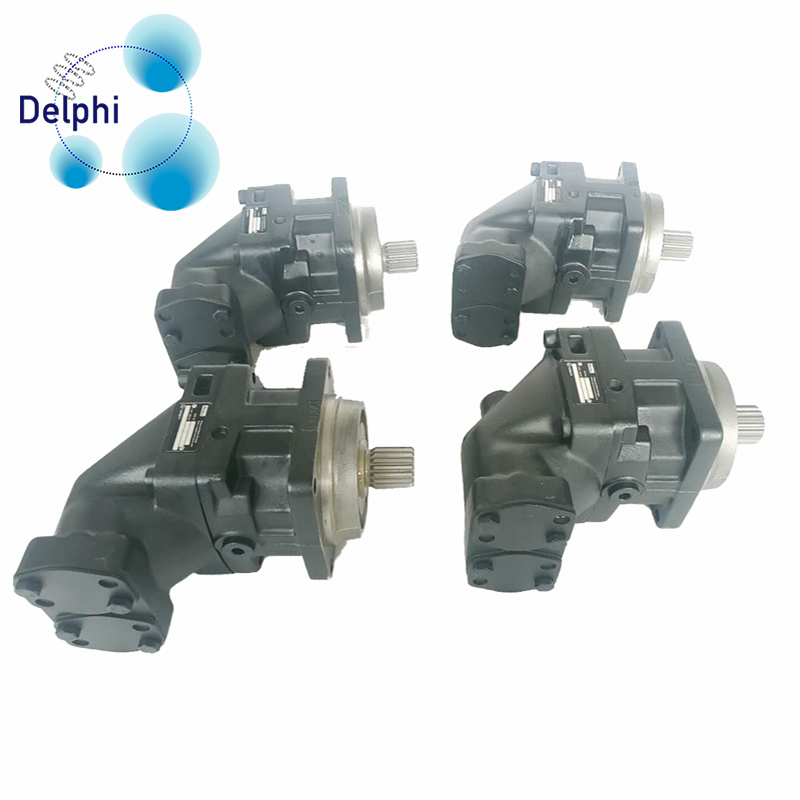Hydraulic motor parts play essential roles in hydraulic fluid power systems by converting hydraulic energy into mechanical energy, allowing the system to perform various tasks.
Here’s how hydraulic motor parts are utilized in hydraulic fluid power systems:
- Power Conversion: Hydraulic motors are key components that convert the energy of pressurized hydraulic fluid into rotary mechanical motion. This rotary motion is used to drive pumps, generators, fans, conveyors, and other machinery in hydraulic systems.
- Actuation: Hydraulic motors act as actuators in hydraulic systems, providing the necessary force and torque to move or control mechanical components such as valves, levers, arms, and cylinders. This enables precise control and movement of equipment in industrial, automotive, aerospace, and other applications.
- Drive Systems: Hydraulic motor parts, including motors, pumps, valves, and actuators, form the core of hydraulic drive systems used in various industries. These systems power vehicles, construction equipment, agricultural machinery, marine vessels, and manufacturing machinery, among others.
- Variable Speed Control: Hydraulic motors allow for variable speed control by adjusting the flow rate or pressure of hydraulic fluid supplied to the motor. This enables precise control over the speed and direction of motion in hydraulic systems, enhancing efficiency and productivity.
- Load Handling: Hydraulic motors are used to handle heavy loads and perform tasks such as lifting, lowering, pushing, pulling, rotating, and positioning objects in material handling, construction, mining, and other industries. Hydraulic systems can exert high forces while maintaining precise control over the movement of loads.
- Energy Efficiency: Hydraulic motor parts are designed to operate efficiently, china hydraulic motor parts supplier with minimal energy losses, to maximize the performance and energy efficiency of hydraulic fluid power systems. Advanced designs, materials, and technologies are employed to optimize the efficiency and reliability of hydraulic motors.
- Integration with Other Components: Hydraulic motor parts are integrated with other components such as pumps, reservoirs, filters, hoses, fittings, and control valves to form complete hydraulic systems. These systems are engineered to meet specific requirements for power, speed, torque, accuracy, and reliability in diverse applications.
- Safety and Reliability: Hydraulic motor parts are engineered for safety and reliability, with features such as overload protection, pressure relief valves, temperature sensors, and fail-safe mechanisms to prevent system failures and protect personnel and equipment from damage.
- Maintenance and Serviceability: Hydraulic motor parts are designed for ease of maintenance and serviceability, with accessible components, standardized interfaces, and diagnostic features that facilitate inspection, repair, and replacement in hydraulic fluid power systems.
Overall, hydraulic motor parts play critical roles in hydraulic fluid power systems, providing efficient, reliable, and precise mechanical motion for a wide range of industrial, commercial, and mobile applications.
How are hydraulic motor parts utilized in agricultural machinery?
Hydraulic motor parts play several essential roles in agricultural machinery, contributing to the efficiency, productivity, and versatility of farming operations.
Here’s how hydraulic motor parts are utilized in agricultural machinery:
- Drive Systems: Hydraulic motors are commonly used to drive various components of agricultural machinery, including wheels, tracks, transmissions, and implements. They provide the necessary torque and power to propel vehicles such as tractors, combines, harvesters, and sprayers, as well as to operate equipment such as augers, conveyors, and winches.
- Steering and Braking: Hydraulic motors are integrated into steering and braking systems of agricultural machinery to provide precise control and maneuverability. Hydraulic power steering systems assist operators in steering large vehicles and equipment with minimal effort, while hydraulic brakes ensure safe and effective stopping power.
- Lift and Control Systems: Hydraulic motors are employed in lift and control systems to raise, lower, and adjust agricultural implements such as plows, planters, cultivators, and seeders. They provide the necessary force and precision to control the depth, angle, and position of implements for optimal soil preparation, planting, and cultivation.
- Hydraulic Hitches and PTOs: Hydraulic motors drive power take-off (PTO) shafts and hydraulic hitches, which enable agricultural machinery to operate powered implements and attachments. PTO-driven equipment such as mowers, balers, spreaders, and sprayers rely on hydraulic motors to deliver rotational power from the tractor’s engine to the implement.
- Hydraulic Systems: Hydraulic motor parts, including pumps, china hydraulic motor parts manufacturer valves, cylinders, and hoses, are integral components of hydraulic systems used in agricultural machinery. These systems provide hydraulic power for various functions such as lifting, lowering, tilting, pivoting, and controlling agricultural equipment and implements.
- Precision Agriculture: Hydraulic motors are utilized in precision agriculture applications to control and automate farming operations with accuracy and efficiency. Hydraulic actuators and motors are integrated into GPS-guided steering systems, automated planting and spraying systems, and variable rate technologies to optimize crop yield and resource utilization.
- Harvesting and Processing: Hydraulic motors drive harvesting and processing equipment such as combines, harvesters, threshers, and sorting machines used in crop harvesting, cleaning, sorting, and packaging operations. They provide the power and control necessary to efficiently harvest and process crops such as grains, fruits, vegetables, and forage.
- Load Handling and Transport: Hydraulic motors are employed in load handling and transport equipment such as loaders, forklifts, trailers, and material handling attachments used in agricultural operations. They provide the lifting, tilting, and propulsion power required to handle and transport heavy loads of crops, livestock, feed, and equipment.
Overall, hydraulic motor parts play critical roles in agricultural machinery, enabling farmers and agricultural professionals to perform a wide range of tasks efficiently, effectively, and safely. By harnessing the power of hydraulic systems, agricultural machinery can enhance productivity, reduce labor, conserve resources, and optimize yields in modern farming operations.
